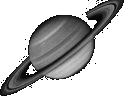
Blackholes2 Forum Message | |
| Forums: |
Atm ·
Astrophotography ·
Blackholes ·
Blackholes2 ·
CCD ·
Celestron ·
Domes ·
Education
Eyepieces · Meade · Misc. · God and Science · SETI · Software · UFO · XEphem |

 |
|
 |
||||
|
|
||||||
Be the first pioneers to continue the Astronomy Discussions at our new Astronomy meeting place... The Space and Astronomy Agora |
| Re: ((space)) Time
Forum List | Follow Ups | Post Message | Back to Thread Topics | In Response To Posted by meva/">meva on June 1, 1999 17:13:00 UTC |
: : : If i have two light-source, A and B. : : : A send light C1 and B send light C2. : : : B.....C2.....C1.....A : : : What happens when light meets? : : : B.......C3........A. : : : C1+C2 join together, and result is C3. : : : What is speed of C3? : : what do you mean, what is the speed of C3? : : If i understand what your asking, your saying : : that when two light beams are aimed at eachother : : and they meet; what is the speed at the meeting : : point? : : i'm not sure what your asking. : : the speed of two passing beams is irrelevant. : : however, it is more interesting to note that : : the observed velocity of light passing by, while : : traveling the opposite direction, (at or near the : : speed of light), will appear that the light : : passing by me is not the sum of my velocity : : and the light passing. But rather the light passing : : by would appear the normal velocity of lightspeed. : : This is relativity. : Indeed-- u'=(u+v)/(1+uv/c2) {according to the STR) : Thus, as u=v=c, u'=(u+v)/2=c : ergo de facto-- both beams will go towards one : another at the speed of light -- c. : Einstein made his own conclusions due to this : numeric calculations on 1905-- the result was the Special Theory of Relativity... : A question worthwhile.
|
|
|
| Additional Information |
|---|
| About Astronomy Net | Advertise on Astronomy Net | Contact & Comments | Privacy Policy |
|
Unless otherwise specified, web site content Copyright 1994-2025 John Huggins All Rights Reserved Forum posts are Copyright their authors as specified in the heading above the post. "dbHTML," "AstroGuide," "ASTRONOMY.NET" & "VA.NET" are trademarks of John Huggins |